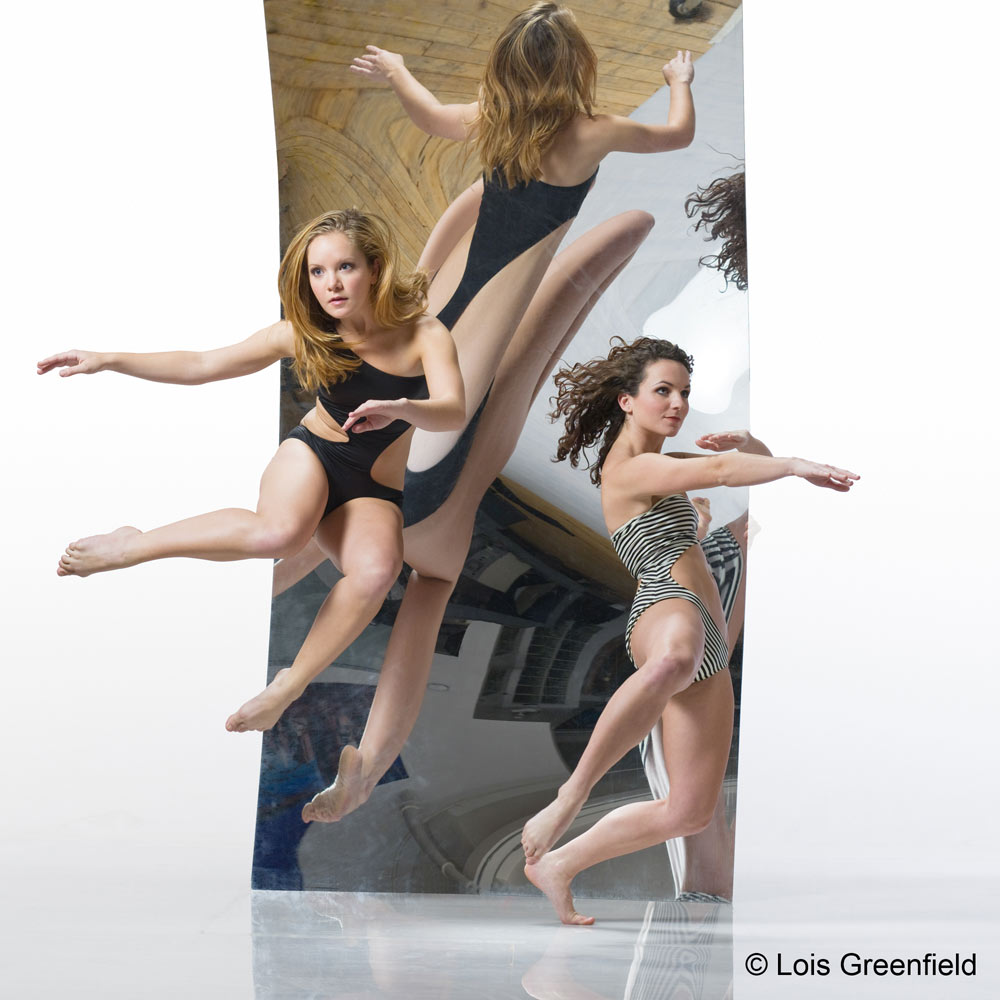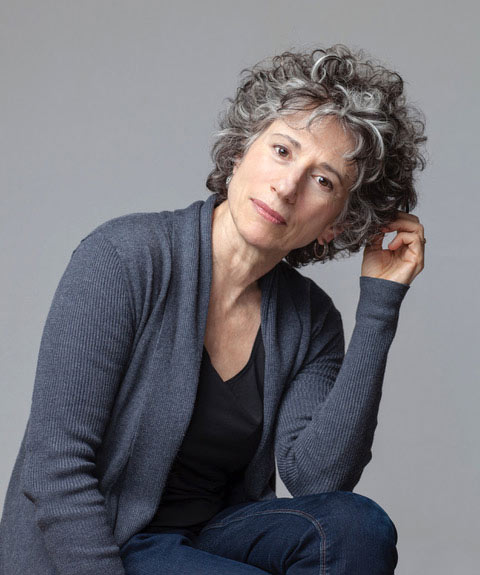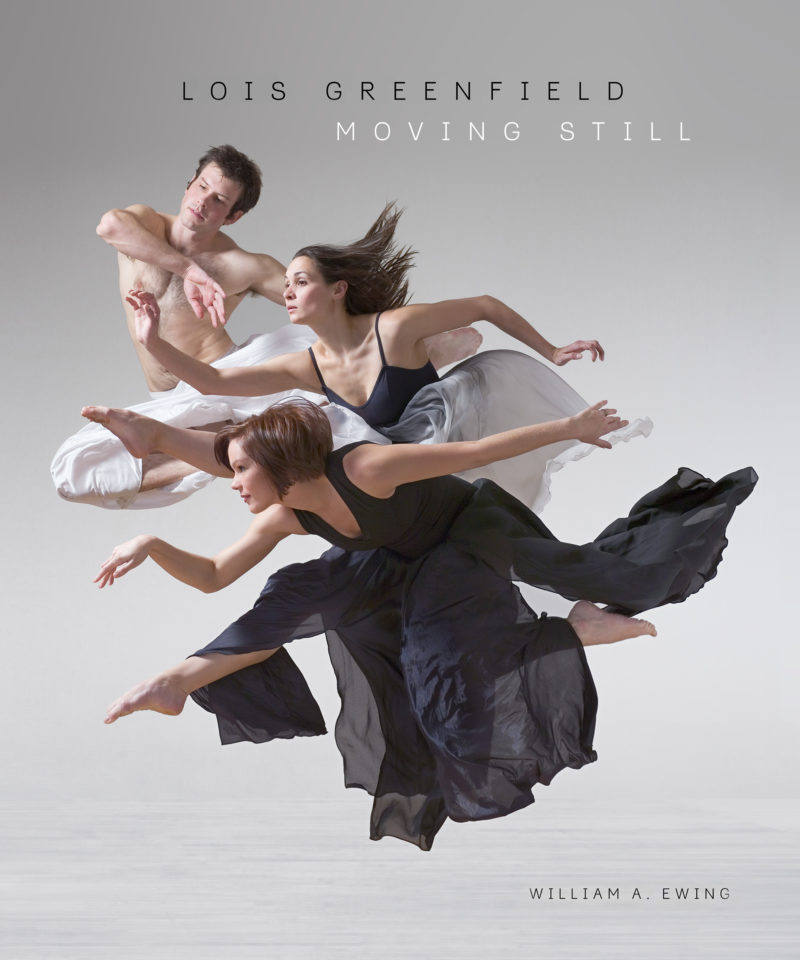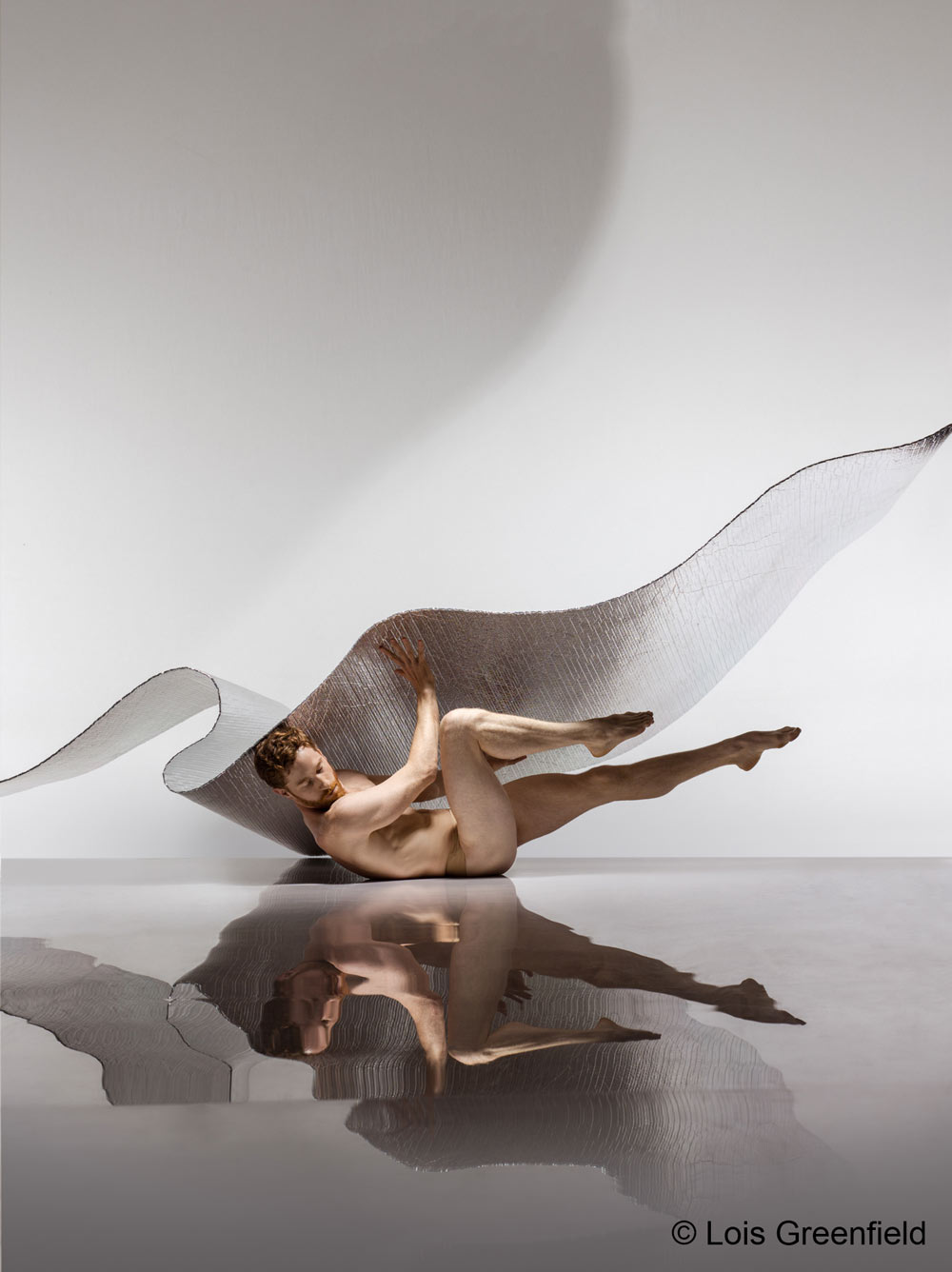An Exclusive Interview
With LOIS GREENFIELD
By Anastasia Tsypkina
“The ostensible subject of my photographs may be motion, but the subtext is time”
– Lois Greenfield, 2015
LOIS GREENFIELD | Moving Still
Lois Greenfield, one of the most influential photographers in all time, developed a unique approach to photographing the human form in motion and redefined the genre of dance photography and transcended its limitations. For the last 40 years, Greenfield has explored movement and its expressive potential in dynamic photos of dancers frozen in split seconds of extraordinary motion. Her dynamic development over the years can be seen in her shift to colour photography and from shooting with a film camera to a digital camera.
Lois Greenfield became a legend thanks to her strong contribution to the exploration of the expressive possibilities of photographed movement. Her unique approach to photographing the human form in motion has radically redefined the genre and influenced a generation of photographers and will continue to influence the generations to come.
Lois Greenfield’s work can be found in many international museums and private collections around the globe including The National Museum of Dance, Saratoga Springs, NY,
Musee de L’Elysée, Lausanne, Switzerland, The International Center of Photography, NYC and many more.
In 2016 she received a Lifetime Achievement Award by McCallum Theatre Institute, and in 2015, she received the Dance in Focus Award by the Dance Films Association.
Greenfield published several books including “Lois Greenfield: Moving Still”, 2015 (Text by William A. Ewing. Thames & Hudson, Ltd. UK), Airborne: The New Dance Photography of Lois Greenfield, 1998(Text by William A. Ewing. Thames & Hudson, Ltd. UK), Breaking Bounds: The Dance Photography of Lois Greenfield, 1992(Text by William Ewing, Thames & Hudson, Ltd. UK & France).
Since her first show at New York City’s International Center of Photography in 1992, her work has been exhibited in many museums and galleries, such as the Tel Aviv Art Museum, Israel; the Venice Biennale, Italy; the Musée de l’Elysée, Switzerland; the Erarta Contemporary Art Museum, Russia; and the Southeast Museum of Photography, Florida.
In her third monograph, legendary dance photographer Lois Greenfield captures the beauty and form of the most talented dancers of our time from the world’s leading dance companies. This collection—one that will be appreciated by lovers of dance or photography—surveys Greenfield’s creative output across the last two decades, and includes her entry into color photography. An elegant monograph celebrating the signature gravity-defying images from one of the world’s most accomplished and respected photographers, Lois Greenfield: Moving Still expresses the artistic possibilities of contemporary dance reflected through an inimitable lens.
Anastasia Tsypkina : Hello Lois, This is a great pleasure and we are very honored to feature an interview with you on the International Lens Magazine. Our readers are dying to know when did you start your career and how it turned out that you’ve become one of the most inspiring and influential dance photographer?
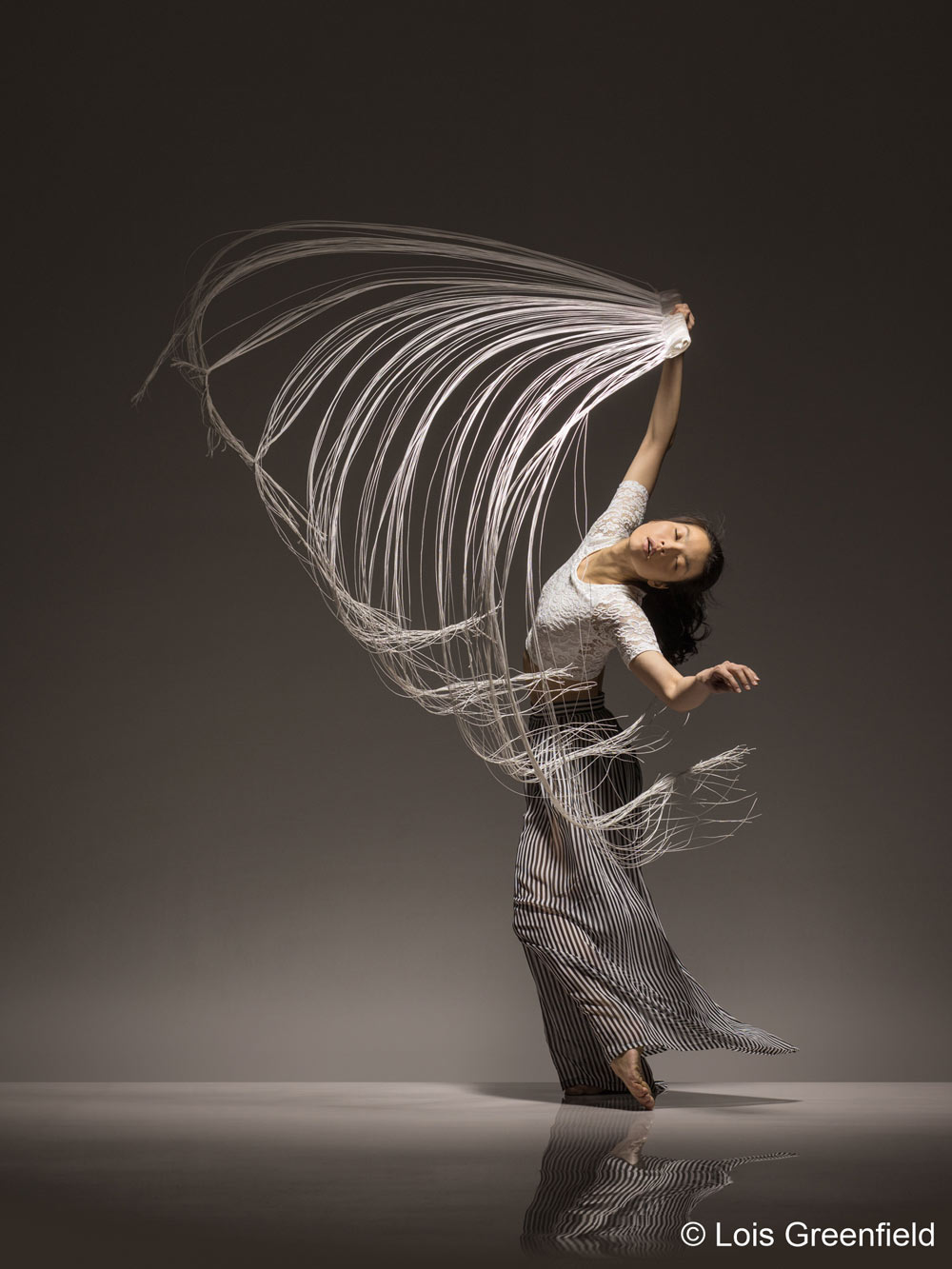
Jye-Hwei Lin © Lois Greenfield. All Rights Reserved
Lois Greenfield: So much in life happens by chance, just like my photographs! When I was 14 years old I spent a summer on an Apache indigenous community in Arizona and took photos with my Brownie camera. From that experience I got interested in studying anthropology, which became my major at University. But my interest in photography grew with my studies and my dream was to be either an ethnographic filmmaker or a photographer for National Geographic magazine, chronicling indigenous cultures.
Neither of those dreams happened. Instead, I started working as a photojournalist in Boston when I graduated from college, and after being assigned to shoot dance concerts I realized that I was more drawn to the graphic potential of dance photography than photojournalism which required the photos to tell a definite story.
I was still more interested in photography than dance, so I wanted to create a hybrid into which I would merge the two very different art forms. Rather than photographing moments that are visible to the theater audience, I wanted to have my pictures capture fleeting moments that could only be seen as a photograph-. I was shooting for the Village Voice, NY Times, and other magazines from the mid 70’s to the mid 90’s. Not wanting to capture choreographed movements that could be seen on the stage, I started shooting in a photography studio with Broncolor strobes and creating unique compositions for my square format Hasselblad camera. This was considered radical at the time, especially since my square frame often rearranged their positions and cropped off dancers’ limbs!
So that is how it all began, and my two books from the 90’s, Breaking Bounds and Airborne, codified that style. Since I had veered away from literal choreography and asked the dancers to improvise for the camera, doing non-repeatable high-risk moments. This gave the dancers the opportunity to experiment with how their bodies moved independently of choreography. Shooting at 1/2000 of a second produced moments that were beneath the threshold of perception.
So that was how my photographic style developed. My two newest series, illustrated in this article, “Reflected Moments” and “Moving Still”, which is the title of my newest book “Lois Greenfield: Moving Still “ are also products of improvisation.
A.T: Tell us about your childhood, did you grow up in an artistic environment? (Classical music, dancing, art)?
L.G: I did not grow up in an artistic environment. My parents were first generation immigrants from Eastern Europe. Back then, there wasn’t much expectation for girls to have a career, but they were very supportive of my interests and proud of my accomplishments.
A.T: Have you ever thought of an idea to change your professional direction? I mean, a photo is just one moment, barely seen with a naked eye, while the video making lets you capture hundreds of those moments going one after another. That is something what we imagine by saying “movement” or “dancing” – continuous frame change…
L.G: The videos show us continuous time, as it is lived or experienced, whereas the photo stops the action for all time. So instead of seeing the continuous flow of the dance as experienced on the stage or in film, the photographs I take at 1/2000 second flash duration reveal an otherwise imperceptible moment that is beneath the threshold of human perception as the naked eye cannot see a slice of time that thin. The resulting image can look surreal because the viewer may conflate the time spent looking at the photo with the duration of the event.
I am interested in the spontaneous act of creating images without forethought. I know many artists start with an idea in mind and then they put it on paper. I don’t work this way. I may have a starting point, which is in the form of a question that begins with “What if…” or a directive- “let’s try that…” Frankly, if I knew what the finished picture would look like I wouldn’t bother to make the picture, as my interest in this process is to get beyond my imagination, not document an already formulated idea.
The point is never to have the viewer figure out what is going on in the photo, but just to present the mystery of that instant.
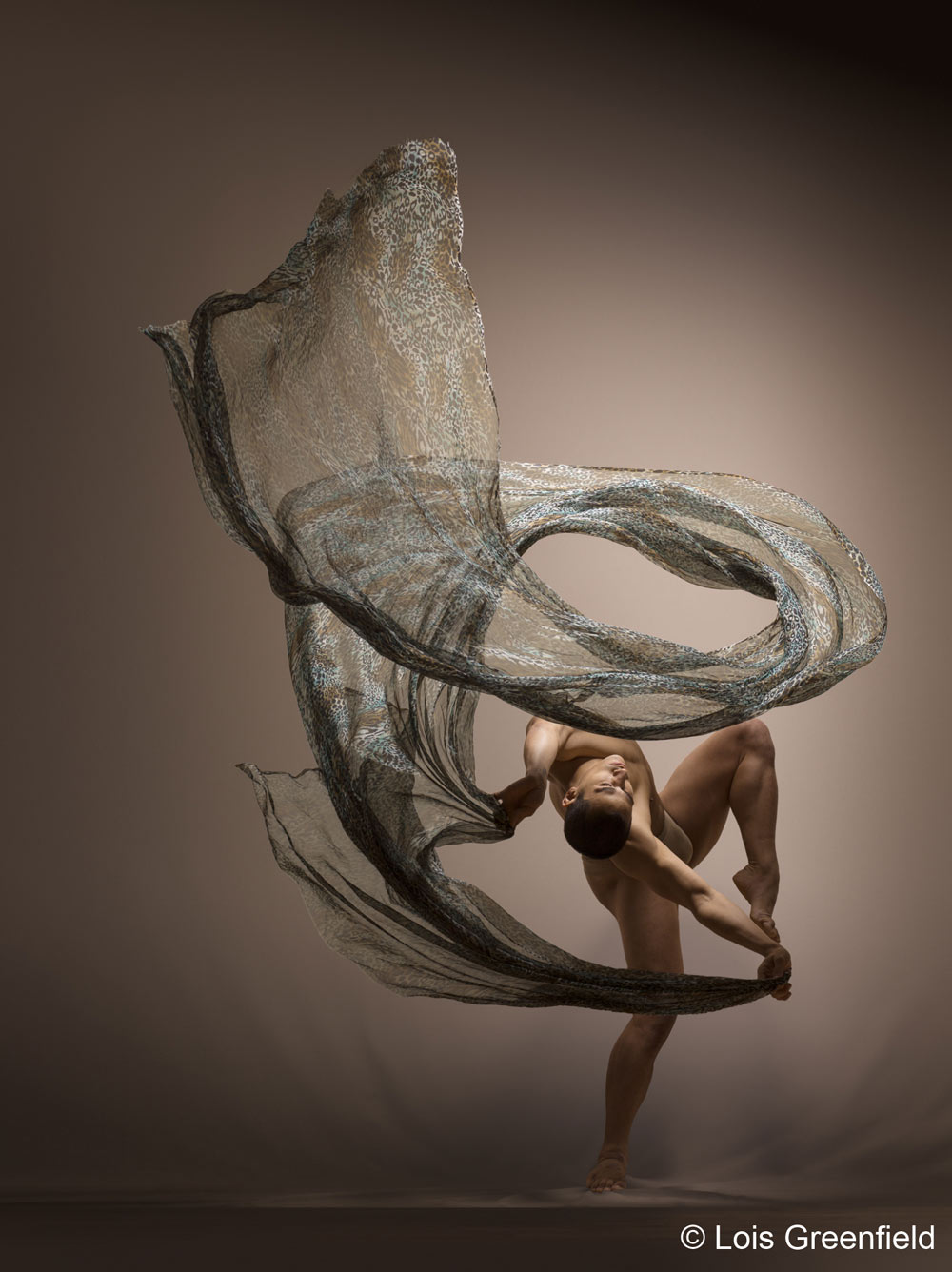
Jordan Isadore © Lois Greenfield. All Rights Reserved
A.T: Sometimes in your works I guess Michelangelo or Bernini, or Renaissance’s language speaking about glory to a man and its beauty. Are you inspired by great artists? What does inspire you in today’s world?
L.G: Yes, I have been inspired by Michelangelo, Bernini and others. During my college years, I spent a semester in Florence and must have absorbed the art I was surrounded by.
In Michelangelo I saw both strength and grace, in Bernini I saw passion and mythology.
Sculptures taught me that when photographing dancers, it is important to look at their movements from all sides, not just the perspective of the dance that is visible on the stage. I like to think of my photos as split-second sculptures.
A.T: Let’s talk about the collaboration with the Australian Dance Theatre from 2003 to 2007, You created “HELD”, a dance inspired by your photography, you were on stage shooting the live action while the images were projected real-time as part of the performance. That’s a very impressive idea to combine the both artistic fields in a real time, live in front of the audience. It’s a different way of work than in the studio, maybe stressful?
L.G: It started with a photo shoot in Adelaide, Australia. Working in my usual way, I created photos based on the choreographer’s ballistic moves. Those photographed movements were then embedded into the choreography so that I, standing on the stage shooting the dance, could pluck them out. There were two banks of my strobe lights on each side of the stage, firing every time I took a shot. All 250 or so photos that I took each evening were projected within seconds – unedited! – On two large screens on the stage. In some scenes, I didn’t shoot the action per se, instead I took extreme closeups of the entwine bodies, or stroboscopic visions of dancers with multiple limbs. In the final scene, I shot from the back of the stage to show the reverse angle of what the audience saw.
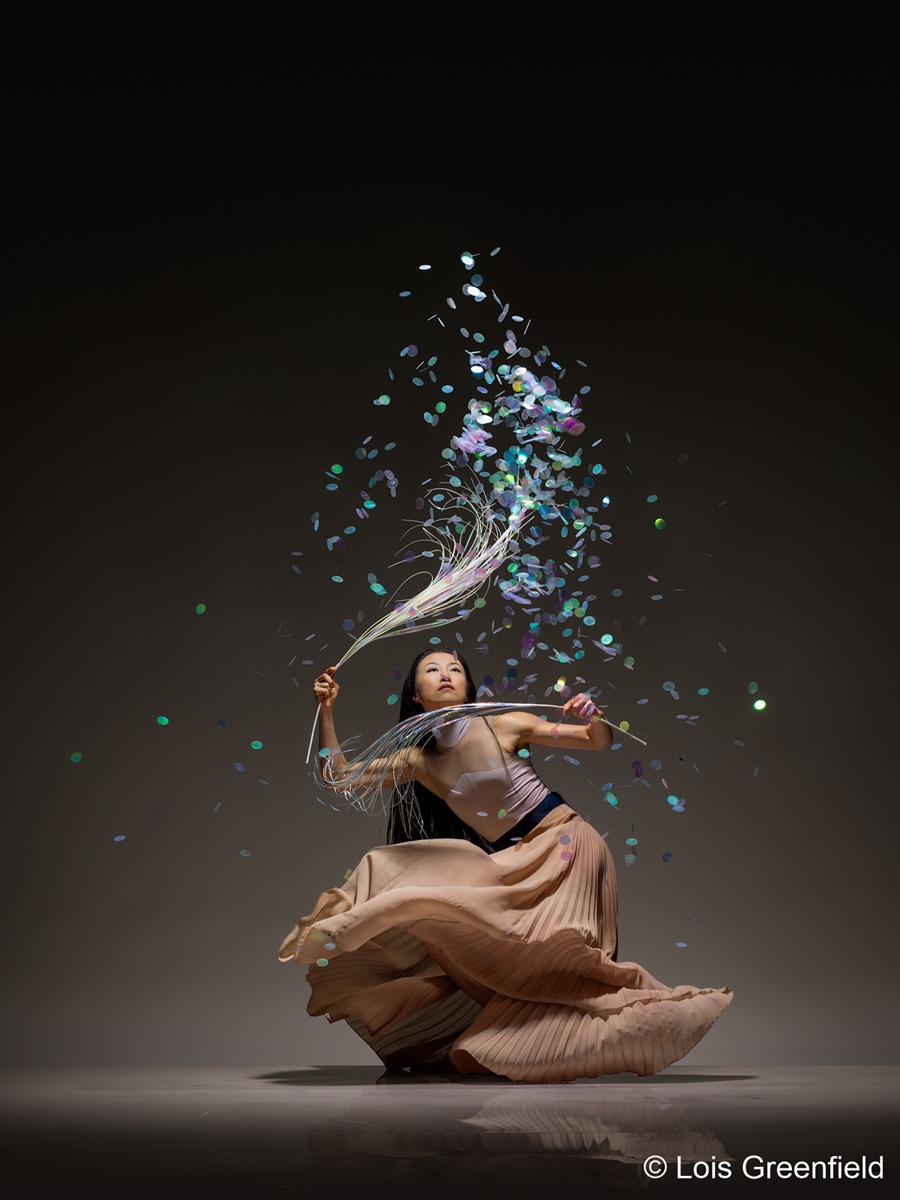
PeiJu Chien-Pott © Lois Greenfield. All Rights Reserved
The audience could see the afterimage on the flash, previewing the shot the moment after I took it. Among the many things I loved about the show was the concept that I was plucking a split-second out of the flux, giving that moment the solidity of a photograph by screening it for 10 seconds, and then it was gone.
It was like catching a fish, then throwing it back in the water…
A.T: What methods or technics do you regularly use for editing photos?
L.G: I don’t do a lot of retouching, just color correction. I don’t combine different negatives. All the photos are a single, in the camera frame.

